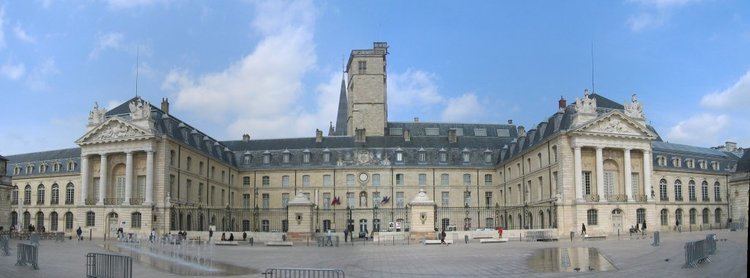Established 1787 Website mba.dijon.fr Director Sophie Jugie | Visitors 150 000/year Phone +33 3 80 74 52 09 Artwork Song of songs | |
 | ||
Location Palace of the Dukes of BurgundyDijon, 21000France Hours Closed now Wednesday10AM–5PMThursday10AM–5PMFriday10AM–5PMSaturday10AM–5PMSunday10AM–5PMMonday10AM–5PMTuesdayClosedSuggest an edit Similar Palace of the Dukes of Burgun, Museum of Burgundian Life, Tour Philippe le Bon, Dijon Cathedral, Church of Notre‑Dame of Dijon | ||
Mus e des beaux arts de dijon
The Musée des Beaux-Arts de Dijon is a museum of fine arts opened in 1787 in Dijon, France. It is housed in the Palace of the Dukes of Burgundy in the historic center of Dijon.
Contents
Mus e des beaux arts de dijon
History
Being one of the oldest museums in France, the Museum of Fine Arts in Dijon was founded in 1787 during the Age of Enlightenment. It is known for its collections in relation with the dukes of Burgundy, for the richness of its encyclopedic collections stretching from Egyptian art to the 20th century as well as the historical interest of the building that holds them, the Palace of the Dukes of Burgundy.
The history of the Fine Arts Museum goes back to the creation of the art school by François Devosge in 1766.
His collections, which have been presented within the Museum since 1787, represent the beginnings of the museum’s collections.
It is located in the former palace of the Dukes of Burgundy and in the eastern part of the Palace of the Estates.
The museum opened its doors to the public in 1799 and gradually spread out within the palace being enriched by imperial grants, deposits by the State, donations and legacies. What to see
As one of the largest museums of France, le Musée des Beaux-Arts de Dijon is known for its rich collections of sculptures, paintings, art objects and various other items from the past.
It is made up of two rooms, the Statues Room – intended for sculpture, and the Salon Condé – for paintings, which celebrates the glory of the Condés, governors of Burgundy.
Those interested in a specific historical age can admire various stunning items from Antiquity, Middle-Age, Renaissance as well as masterpieces stretching from the 17th century to the 21st century.
Among the attractions of the museum, you can find the tombs of Philippe le Hardi and Jean sans Peur, the collection of German and Swiss primitives (the most important in France) and the collection of French paintings, rich in artists dating back to the time of Louis XIV, not forgetting the collection of contemporary art.
The museum also holds extra-European collections, such as ceramic and Islamic glasses, weapons and oriental caskets, ancient ivories of Africa, everyday objects and African ceremonial masks, Chinese, Japanese porcelains, and Korean stoneware, Tibetan and Indian sculptures and pre-Columbian ceramics.
Artworks
The Musée include a large and varied collection of art:
